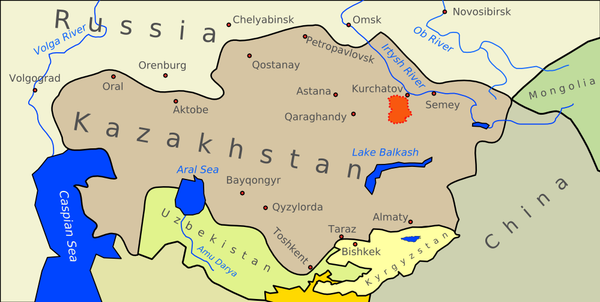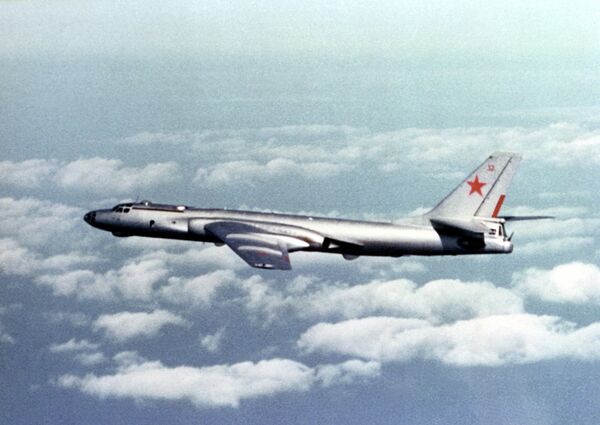Four days before the first Soviet hydrogen bomb test was carried out, Soviet Premier Georgy Malenkov revealed that the US monopoly on hydrogen bombs, set in November 1, 1952 with the test of a US thermonuclear device, had been broken.
Test Site So Secret It Couldn't Be Found on Any Maps
Dubbed Joe-4 by the Americans, and officially called the "Special Jet Engine" in Russian for the sake of secrecy, the RDS-6 test took place at the Semipalatinsk Test Site, a massive 18,000 square km test area roughly the size of Wales in Soviet Kazakhstan.
The test, prepared under the direction of legendary nuclear scientist Yulii Khariton and a young Andrei Sakharov, supervised by Igor Kurchatov and assisted by Igor Tamm and Vitaly Ginzburg, was preceded by intense preparations, which included the placement of 1,300 scientific instruments, along with camera equipment, housed in special protective casing, throughout the site. Two dozen pieces of military equipment, along with a mock city complete with industrial and administrative buildings, were used to measure the blast's impact. The RDS-6 would be dropped onto Earth's surface from a 40-meter high tower.
On the morning of August 12, 1953 at 7:30 a.m., the RDS-6 test began, with the intensely bright explosion seen from as far as 100 km away from the test site, and its deafening roar heard even further away. A gigantic glowing mushroom cloud measuring a kilometer in diameter formed. Most of the buildings within a four kilometer radius were instantly leveled by the shockwaves. Radioactive contamination rendered the use of the rest impossible.
The Semipalatinsk Test Site was a closed city, with a strict entry and exit regime. Contact between civilian and military personnel in the area was strictly limited. The city of Kurchatov, located nearby along the Irtysh River, contained the living quarters of scientists and military personnel. It too could not be found on any map, with trains carrying people and equipment coming to the city only under the cover of night.
Deadly Sloika Design
At the heart of the RDS-6's operation principle was the "Sloika," design, named after a type of layered puff pastry. The spherical atomic charge was covered by alternating layers of thermonuclear fuel and uranium-238 and "crimped" from above with a chemical explosive. The bomb used lithium-6 deuteride as its thermonuclear fuel, which produced tritium, another thermonuclear fuel, during the explosion itself.
The Soviet test was significantly smaller than the test conducted by the Americans in November 1952; that operation, codenamed Ivy Mike, exploded a bomb with a yield of 10.4 megatons, an absolute record at the time, at the Enewetak Atoll in the Pacific Ocean. However, unlike its Soviet analogue, the US device was not actually a deliverable weapon, weighing about 54 metric tons and being much too large to fit into a bomber. The Soviet device, meanwhile, weighed 7 tons, and could be delivered by existing Tu-16 strategic bombers.
Atoms for Peace and Space Exploration
The successful test of the RDS-6 had major historic implications, serving not only as a serious "geopolitical argument" to dissuade Washington from moving forward with its post-WWII plans to nuke the USSR into submission, but also as an invaluable step in the development of Soviet and Russian cosmonautics.
As for Semipalatinsk, the territory would become home to over 200 more air and ground-based nuclear explosions over its lifetime. Tests continued until October 1963, when the Soviet Union and the United States signed a treaty on the prohibition of nuclear tests in the atmosphere, outer space and under water. The last Soviet nuclear test took place in October 1990, with Russia refraining from any nuclear testing after the breakup of the USSR. In 1992, the United States halted its own nuclear tests. In 1996, the UN adopted the Comprehensive Test Ban Treaty. Moscow signed and ratified the agreement. The US signed the treaty but did not ratify it.



